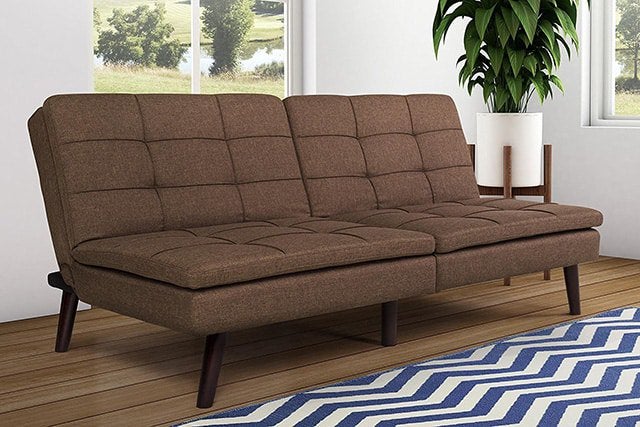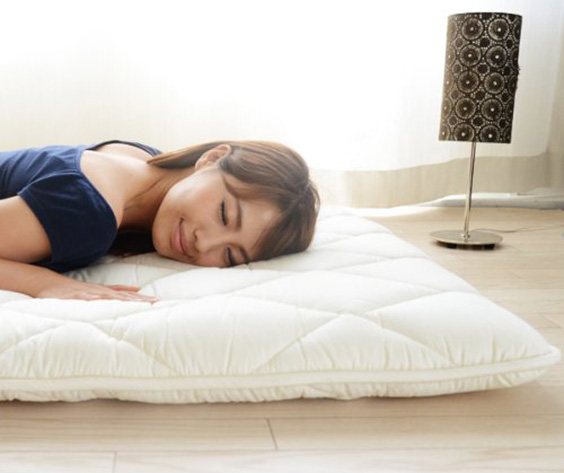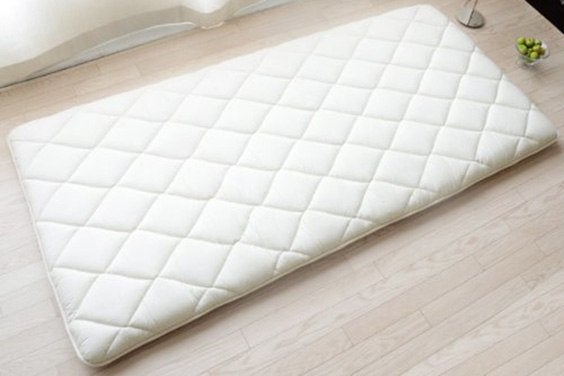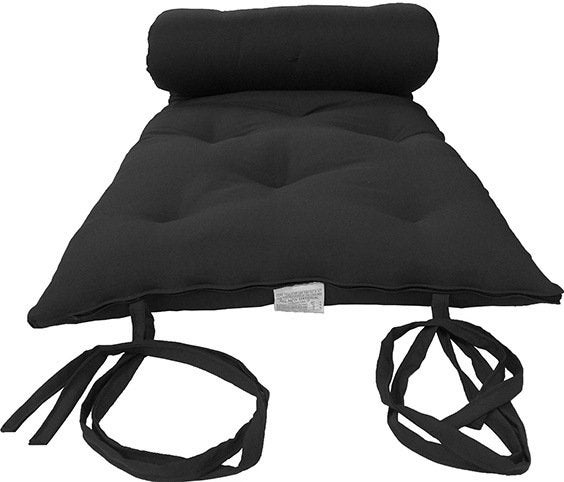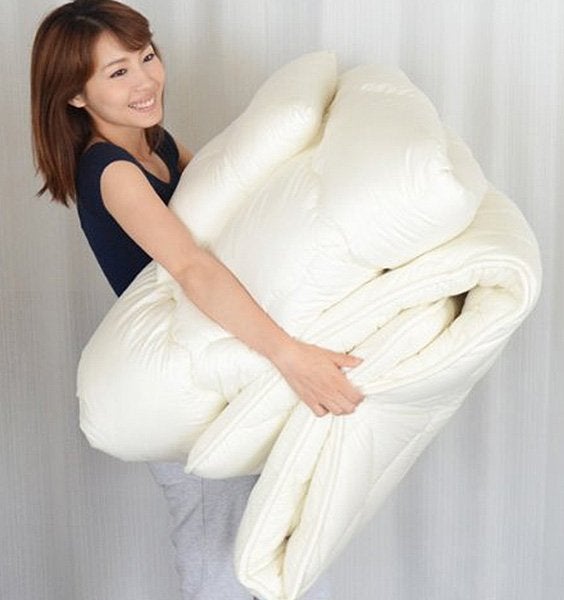When limited in space, or you simply need to provide an extra sleeping area in an otherwise used room, many people explore the use of futons. Futons are a space-saving piece of furniture that can double as a sitting area or a bed surface, depending on what is needed. Typically, they work as a couch or sitting area by day and then fold down to create a sleeping surface by night. They use a thick, cushioned mat for comfort.
Typical Futon
Japanese Futon
A Japanese futon, otherwise known as a traditional Shikibuton (or Shiki Futon), uses a similar concept to provide a minimalist approach to your sleeping space. It is slightly different than what we think of as a futon, however, and these differences in construction and style make them a much more versatile product than their more bulky, framed futon counterpart. If you have come across the term before and were wondering to yourself what a Japanese Futon was, read on for a full explanation:
What is a Japanese Futon?
Shikibutons are slim, rectangular, rollable (or foldable) cushions that are filled with cotton batting to provide a cushioned comfort and support. These are thinner than your modern foam-filled futon cushions, and they usually only measure 3 to 4 inches in height. They do come in a variety of bed sizes to meet the needs of modern conveniences, but traditionally, these are a single sleeping width to be used on top of a woven Tatami Mat to help keep your bedding off the floor.
They can also be folded to form a sitting mat or even used to lounge against. They are meant to be rolled up or folded and stored away when not in use, and it should always be used with something beneath that allows for air flow to keep it from retaining body heat and moisture- which can create a humid environment ideal for mildew and bacteria growth.
What is a Tatami Mat?
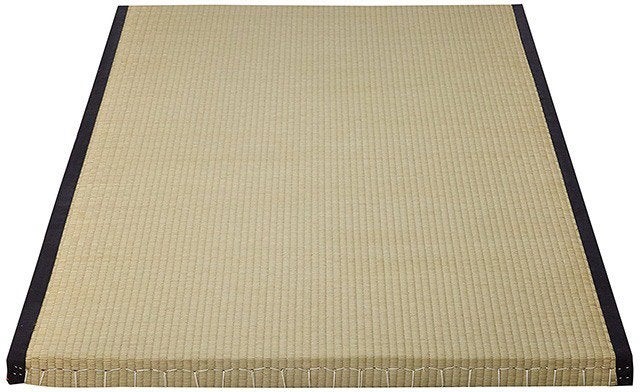
Modern Tatami mats may be made with synthetic foams, rubber, or other types of materials to provide a similar effect. They are used to provide both protection for your flooring as well as provide a comfortable walking or sleeping surface.
What is a Shikibuton Made Of?
Shiki futons are almost always exclusively made of cotton both in its cover and fill. The casing is usually a zippered cover made of woven cotton or cotton duck weave (a heavy cotton or linen weave, also called canvas). These are considered an ecologically friendly choice in both construction and use as the simplicity of the materials and make leave a very low environmental footprint.
Foam futon choices are not considered true Japanese Futons. Although they may offer comfort and support, be aware that this is not a traditional Shikibuton comfort, and it may not store as easily either.
Where Can I Buy a Japanese Futon?

How Do I Care For a Shiki Futon?
Japanese futons should be rolled or folded when it is not in use. To leave them out invites mold and mites to accumulate beneath it, even with the proper floor covering. Depending on the type you have, you should follow the care directions of rolling or folding in thirds after use.
As mentioned, using a Tatami mat or a frame of some sort beneath truly is a must for proper use. You can also rotate and flip it regularly to ensure an even wear over time to get more life out of your product.
Whenever possible, your futon will benefit from a good airing out either out of doors in the sun or simply draped up and over something that allows for good air circulation. You should do this at least once a month, although weekly is better. You should also keep the flooring where you place your mat well cleaned. Some cushions may also be washed in a washing machine- just be sure to check for durability before doing this.
Conclusion
If you have been looking for a more simplistic style, are interested in environmentally friendly practices, need to free up some space, or just want a good option for guest comfort, then a Japanese Futon might be the perfect bedding choice for you. The cotton construction is durable and breathable, and it allows for easy storage when not in use. Plus, the use of the smaller cushion when compared to a traditional futon can be applied to other aspects of your comfort when relaxing or lounging around your house.
If you have any questions or comments, please let us know below!
